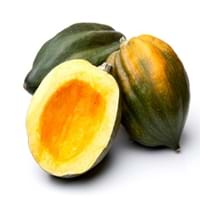Health Benefits
Anti-inflammatory properties, Arthritis treatment, Regulates Blood Sugar
Body hydration, Cancer prevention, Gout treatment, Heart care, Treatment of skin Diseases
General Benefits
Boosts immune system, Controls blood sugar levels, Digestive aid
Body hydration, Controls blood pressure, Digestive aid, Eye care, Helps in weight loss, Improves eye vision, Maintains healthy cholesterol level, Strengthens bones
Skin Benefits
Nourishes skin, Protects skin from oxidative stress
Anti-aging benefits, Brightens and lightens complexion, Hydrates skin, Reduces wrinkles, Treatment of dark spots
Hair Benefits
Prevents hair loss, Promotes longer and healthier hair, Regulates hair growth
Prevents hair loss, Promotes longer and healthier hair, Protects hair
Allergy Symptoms
Asthma, Red rash, Swelling of mouth, tongue or lips
Abdominal cramps, Breathing difficulty, Coughing, Diarrhea, Hives, Hoarseness, Itching in eyes, Itching of mouth, Itching sensation in throat, Nasal congestion, Nausea, Skin rash, Wheezing
Side Effects
Diarrhoea, Vomiting
Allergic reaction
Best Time to Eat
Along with meal, As a snack in the late afternoon, Don't eat after meal, Eat the fresh ones, avoid mixing with any other foods, don't eat after meal.
As a snack in the late afternoon, Don't consume at night and before bed, Eat the fresh ones, avoid mixing with any other foods, don't eat after meal., Morning time (before lunch)
Vitamin B5 (Pantothenic Acid)
Vitamin C (Ascorbic Acid)
Vitamin E (Tocopherole)
Not Available
Vitamin K (Phyllochinone)
Not Available
Lutein+Zeaxanthin
Not Available
Calories in Fresh Fruit with Peel
Not Available
Calories in Fresh Fruit without Peel
Not Available
Calories in Canned Form
Not Available
Season
Winter
All seasons
Varieties
Bush Table Queen, Heirloom Table Queen, Festival Hybrid, Early Acorn Hybrid, Table Ace, Ebony and Cream of the Crop
Green Flesh, Yellow Rind and Orange Flesh
Color
Dark green, Green-yellow, Orange green
Green, Yellow
Inside Color
Yellow
Light Green
Origin
Central America, North America, Unknown
France
Grows on
Vines
Not Available
Soil Type
Well-drained
Sandy loam, Well-drained
Climatic Conditions
Cold, Sunny
Warm
Facts about
- It was named as Acorn Squash for its resemblance to a large ribbed acorn.
- It is said that squash was being grown in Mexico as long as 10,000 years ago.
- It was the first food cultivated by native American Indians.
- The average weight of honeydew melon is 6 pounds.
- 90% of a honeydew is water.
- In middle east countries, dried and roasted honeydew seeds are consumed as snacks.
- Honeydew melons can be 15-22 mm long.
Other Countries
Egypt, India, Iran, Italy, Mexico, Russia, Turkey, Ukraine, United States of America
Brazil, Egypt, India, Iran, Mexico, Morocco, Spain, Turkey, United States of America
Top Importer
Costa Rica
Not Available
Top Exporter
United States of America
Not Available
Botanical Name
Cucurbita Pepo
Cucumis melo
Synonym
Winter Squash
Not Available
Subkingdom
Tracheobionta
Tracheobionta
Division
Magnoliophyta
Magnoliophyta
Class
Magnoliopsida
Magnoliopsida
Subclass
Dillenhidae
Dillenhidae
Order
Cucurbitales
Cucurbitales
Family
Cucurbitaceae
Cucurbitaceae
Generic Group
Not Available
Gourd
Difference Between Acorn squash and Honeydew
We might think that Acorn squash and Honeydew are similar with respect to nutritional value and health benefits. But the nutrient content of both fruits is different. Acorn squash and Honeydew Facts such as their taste, shape, color, and size are also distinct. The difference between Acorn squash and Honeydew is explained here.
The amount of calories in 100 gm of fresh Acorn squash and Honeydew with peel is 40.00 kcal and Not Available and the amount of calories without peel is Not Available and 36.00 kcal respectively. Thus, Acorn squash and Honeydew belong to Low Calorie Fruits and Low Calorie Fruits category.These fruits might or might not differ with respect to their scientific classification. The order of Acorn squash and Honeydew is Cucurbitales and Cucurbitales respectively. Acorn squash belongs to Cucurbitaceae family and Honeydew belongs to Cucurbitaceae family. Acorn squash belongs to Cucurbita genus of Pepo species and Honeydew belongs to Cucumis genus of C. melo species. Beings plants, both fruits belong to Plantae Kingdom.









